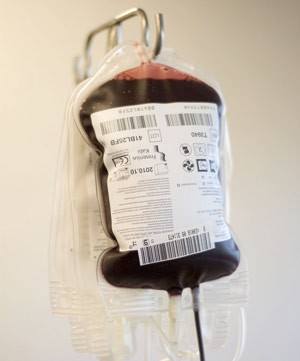Why were high-risk riders not tested adequately during the 2010 Tour?
 Although the UCI pledges to do what it takes to discover the source of the leak of the so-called Index of Suspicion from last year’s Tour de France, the document’s validity itself has not been disputed. While the UCI is keen to state that a rider’s position on the list is not proof of doping, it is clear that those ranked closer to the maximum ten out of ten should have been targeted for very close scrutiny by testers. The fact that they were not raises serious questions about the efficacy of testing at the race.
Although the UCI pledges to do what it takes to discover the source of the leak of the so-called Index of Suspicion from last year’s Tour de France, the document’s validity itself has not been disputed. While the UCI is keen to state that a rider’s position on the list is not proof of doping, it is clear that those ranked closer to the maximum ten out of ten should have been targeted for very close scrutiny by testers. The fact that they were not raises serious questions about the efficacy of testing at the race.
On the scale, a ranking of zero out of ten was applied to those who the UCI believed had zero chance of doping; as riders were ranked higher on the scale, they were supposed to be examined more closely.
However the World Anti Doping Agency’s Independent Observer report released last October pointed out four specific cases where recommended testing was not carried out or significantly delayed. It outlined several worrying examples, with four standing out. These referred to two riders ranked 10/10 on the priority index, and two ranked 8/10.
According to the list leaked to L’Equipe and published by that newspaper last week, those individuals who were ranked 10/10 were Carlos Barredo and Yaroslav Popovych.
Quoting the Independent Observers report, there were very worrying shortfalls in the handling of these two cases:
• For a rider identified as having a priority index of ten, no blood samples were collected following the Laboratory recommendations after interpretation of blood passport data from the first week of the Tour, with only urine being collected and no blood as recommended by the Laboratory. Further, a recommendation to target test the rider for EPO took seven days to be executed.
• A rider identified as having a priority index of ten was not tested for either urine or blood from 3 April to the start of the Tour. Recommendations made by the Laboratory following testing in the first three days of the Tour resulted in no further blood samples being collected but rather only urine and approximately ten days later.
The IO Team became aware of the remarks made by the laboratory regarding the analysis of this rider’s specific sample that raised the suspicion of the use of proteases. No further information regarding any actions taken by the UCI for further analysis of that sample was made available. [excerpt ends]
When the Independent Observers report was released, the UCI did not comment on these shortcomings. With Popovych appearing to be one of the two riders, it will raise further questions from those who claim that there was historically too close a relationship between the governing body and the US Postal Service/Discovery Channel/RadioShack teams. Former US Postal Service rider Floyd Landis claimed that the team received preferential treatment from the UCI in terms of testing, and that bribes were paid to cover up problems. The UCI has denied this and said recently that it would sue Landis.
Popovych is under scrutiny from US and Italian anti-doping investigators, and has been questioned on several occasions in relation to suspected use of doping products. The US Postal Service team is under investigation itself by a number of US federal agencies, and VeloNation understands that multiple witnesses have backed up claims of doping on the team.
Questions about other riders:
The Independent Observers report also highlighted concerns as regards two other cases. An excerpt follows:
• A rider identified as having a priority index of eight (with ten being the highest and most at risk of doping) was tested only once (urine EPO) during the Pre-Tour period with no blood sample collected for the analysis of CERA, HBT, HBOC or other prohibited substances and/or methods.
During the Tour recommendations from the Laboratory related to target testing for EPO did not seem to be conducted expediently or as appropriate (ie. the EPO test was conducted 6 days later while the blood sample was only analysed for hGH).
Lastly, following a significant delay in providing an early morning sample and in conjunction with the intelligence already held on this rider, there seems no evidence of more intense target testing on this rider.
• For a rider identified as having a priority index of eight, who was recommended to be target tested for EPO by the Laboratory, the UCI did not target test the rider and in addition a sample collected five days later was not analysed for EPO. Interestingly in this case collection of follow-up samples from this rider was initiated by the AFLD via the WADA Resolution. [end of excerpt].
According to the list leaked to L’Equipe, those on 8/10 were David de La Fuente, Jose Ivan Gutierrez, Danilo Hondo, Matthew Lloyd, Iban Mayoz, Dimitriy Muravyev, Rinaldo Nocentini, Daniel Oss, Kevin Seeldrayers, Konstantin Siutsou and Jurgen Van den Broeck.
Denis Menchov was positioned between these two groups, given a rating of nine out of ten on the index.
Again, the shortfalls in testing relating to these riders will raise questions. The UCI and WADA have said that they will work together to identify the source of the leak, but equally pertinent questions should be answered as to why four riders at the top end of the scale were not tested adequately after concerns had been raised about their biological readings.